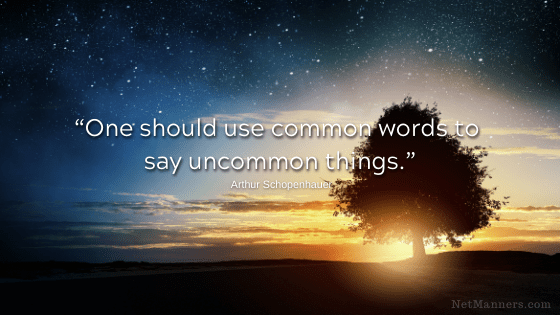“That is Not What I Meant” Doesn’t Cut it!

My regular readers know that my own email experiences inspire my posts. As a result, I often find myself in a communication thread that I know is probably something you would run into. So the thread goes into my “Share with Net M@nners” folder.
“You Attract More Bees with Honey”
I received an email the other day from a potential client that included several very demanding comments. The email noted how they would expect me to run my business if they chose to work with me.
After reading the email, I said “Wow” out loud. This person must have had some bad past experiences with others they chose to work with and got burned. That was now being passed on to me to compensate for.
No big deal. I’ve partnered with many a leery client whose confidence and trust had been damaged by those before me. I don’t take it personally because it’s not about me.
But think about it. What type of impression do you think this approach will have? Any consultant worth their salt would likely run in the opposite direction of a potential client that approached them in this manner.
Initial Impressions
When approached this way, I’ll think twice about whether I can form a mutually respectful partnership. I do not read anything into emails like this; instead, I take them at their face value based on the choice of words used.
I then respond with professionalism and grace. Their subsequent communication will confirm if it is worth either of our time to continue on. I do my best not to assume they are the jerk that their email may imply. Yeah, and sometimes that is hard to do.
I answer each comment point by point, by down-editing. Factually and unemotionally. Including in this particular case declining to lower my rate to compensate for money already spent (wasted) with others.
Their response? “Didn’t mean to insult…” That’s not what I meant…” “I didn’t intend to hurt your feelings.”
They did not hurt my feelings, nor did I say so. However, I stated I was disappointed that they felt the need to assume I was like others that had disappointed them.
You Type It; You Mean It
Their response ended with, “It was not meant to be personal, so please do not take it that way.” But that is what and how they typed — to me. That made it personal.
This communication style let me know that this was an individual that most likely would not appreciate what I could bring to his project. They decided not to take responsibility for the words they chose to type. So I decided to take a pass.
Have you communicated with people who just type what they want without taking a moment to review if their questions/challenges are apropos or even accurate? If not, you are lucky.
Although it may be challenging, always try to give the benefit of the doubt by replying with grace. Many folks do not realize how terse or demanding their emails are perceived. By you responding with grace, you provide the opportunity for them to clarify their tone.
That said, “It was not meant” or “didn’t mean to” doesn’t fly if you type it. You. Typed. It.
Why would you type something you didn’t mean? If you start to type “I didn’t mean it…” just humbly apologize and clear the air. Don’t make excuses — own it.
In this case, this potential client was playing “boss” with me. If they had taken a moment to review my site(s), bio, or information, they certainly would not have sent the email they did. But then again, maybe this particular e-bully would have…
You Know What Happens When You Assume?
Do not expect the other side to know what you meant or what you mean. Instead, choose the appropriate words and read your email aloud before clicking Send to ensure your tone and intent are clear.
Take your time and choose your words carefully to relay your concerns while ensuring that what you type is what you mean. Because that is precisely how it will be taken.
And, if you don’t want to make that effort, don’t be surprised when the response you receive is not what you desired. That is, if you get one at all.






